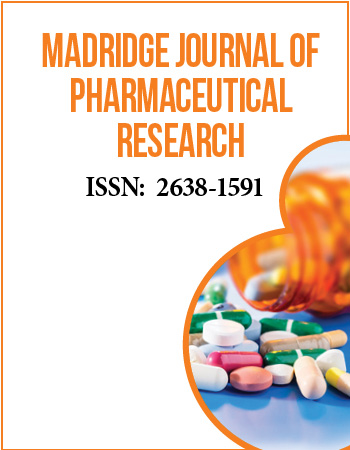2nd International Conference on Pharma & Nutrition, Health and Aging
August 1-2, 2019 Valencia, Spain
The Study of the Organochlorine Pesticide Residues Incidence from Pork Fatty Tissues, Meat and Meat Products
1Faculty of Food Science and Technology, University of Agricultural Sciences and Veterinary Medicine of Cluj-Napoca, Romania
2Department of Internal Medicine, Iuliu Hatieganu -University of Medicine and Pharmacy, Romania
3Clinical Center of Diabetes, Nutrition, Metabolic diseases, Iuliu Hatieganu -University of Medicine and Pharmacy, Romania
The topic of organochlorine pesticides is a current one, given that in March 2005, 90 countries, including Romania, joined to the Stockholm Convention. Convention approaches the problems of toxic chemicals, respectively of the 12 most dangerous persistent organic pollutants, between them being also aldrin, chlordane, DDT, dieldrin and endrin heptachlor, which are monitored in the present study.
To assess the effects of organochlorine pesticide residues in pork fatty tissues, meat and meat products the following activities were achieved: Determination of crude fat content, identification of organochlorine pesticide residues by GC-ECD method and confirmation by GC-MS method, optimized and compared with the maximum residue levels admitted by standards and establishing a correlation between crude fat content and organochlorine pesticide residues.
The material for analysis consisted of fatty tissues, meat and meat products and was sampled from one commercial unit in Cluj-Napoca (Romania). An organochlorine pesticides standard mixture was containing: aldrin, α-chlordane, γ-chlordane, 4,4ʼ-DDD, 4,4ʼ-DDE, 4,4ʼ-DDT, dieldrin, endosulfan I, endosulfan II, endosulfan sulfate, endrin, endrin aldehyde, endrin ketone, heptachlor, heptachlor epoxide and methoxychlor was used to construct the calibration curves. The calibration curve of each OCP was constructed using standard samples with six different concentrations (5, 10, 50, 100, 200, 500 ng/g) of the standard mixture solution. Each sample and standard solution was analyzed in duplicate using gas chromatography combined with electron capture detection (GC-ECD). The method was validated by determining recoveries, correlation coefficients, relative standard deviations (RSD) and detection limits. The precision of the method was satisfactory with RSDs < 20% for all OCPs. The highest amount of organochlorine pesticides was identified in liver sausage samples. An explanation for these values should be the affinity of these pesticides to bioaccumulate in fat and pork organs. The values obtained for organochlorine pesticide residues are low, being below the maximum residual limit.
Biography:
Crina Carmen Muresan is a Postdoctoral Researcher who has more than 9 years experience in exploitation of food industry by-products, development and optimization of functional food products, food safety and determination of food products quality parameters. She started the PhD stage (2004-2010) in the field of Veterinary medicine, having as research theme “Researches concerning the influence of processing on organochlorine pesticide residues from meat and meat products”, granted by the PhD evaluation commission with the “Very good” degree. She is responsible for 2 project PN-III-P2-2.1-CI and research assistant in 10 projects.


